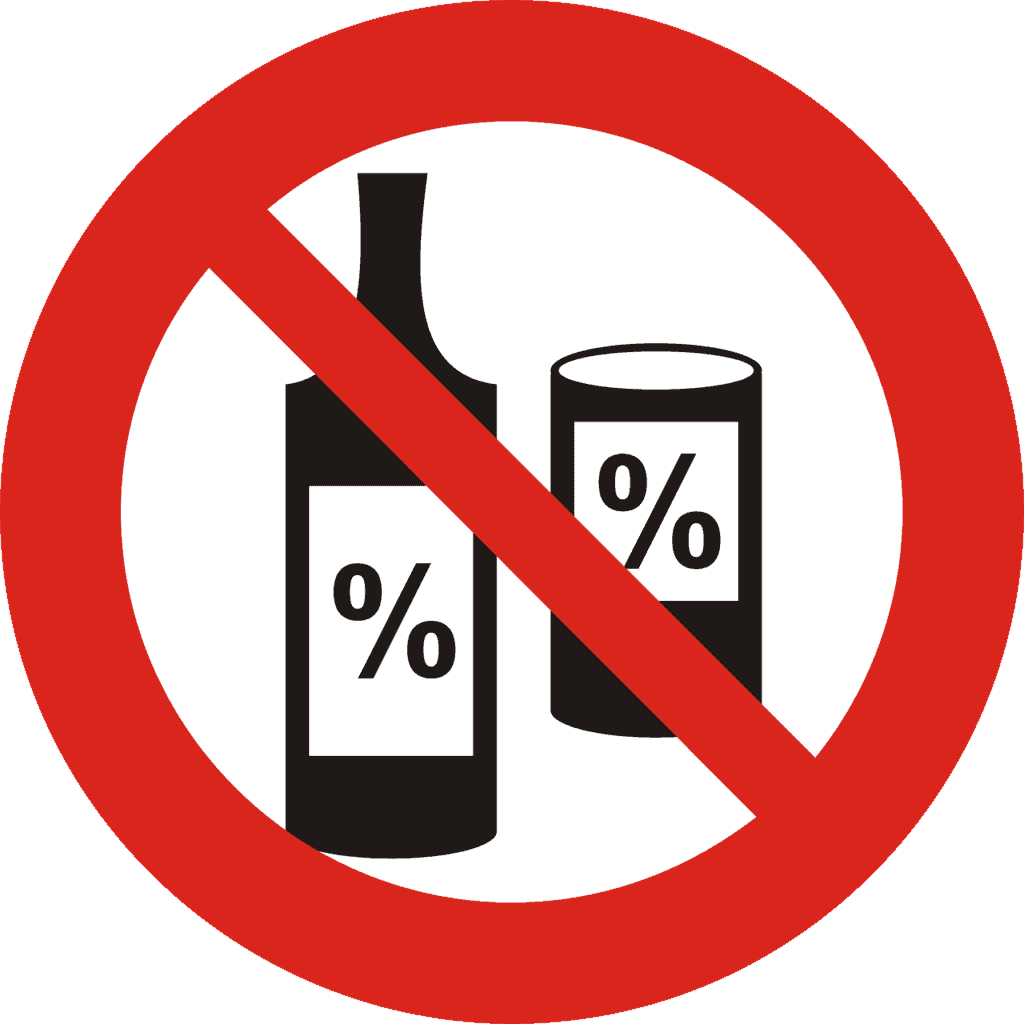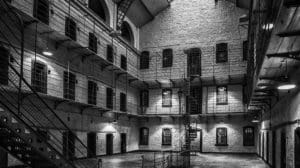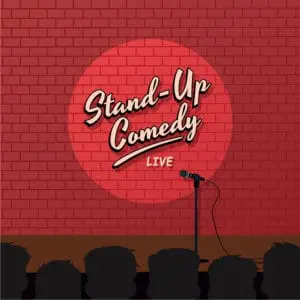Everything You Need To Know About Prohibition

Updated On: April 07, 2024 by doaa
Have you ever wondered what the term ‘Prohibition’ means? Maybe you’ve heard the phrase referenced in pop culture in films such as The Great Gatsby or Lawless or in songs such as Oh What A Night by The Four Seasons.
In this blog, we’re going to look at the history of Prohibition- what Prohibition is and why it was introduced into the United States in the eighteenth century. So, if you’re interested in learning more, stay tuned!

Prohibition: What Does The Term Prohibition Mean?
The term Prohibition refers to the act of preventing something from taking place, particularly through enforced legal implications if the act is carried out.
While the term Prohibition can be used in reference to other serious circumstances such as preventative measures on drugs, guns and in extreme cases clothing, the most popular use of the word refers to the infamous alcohol ban between the years of 1920-1933 in the United States of America.
Let’s take a look at why Prohibition was introduced in America, if it was successful and the implications it had for the country during the 13 year period.
Why Was Prohibition Introduced In The United States of America?
Simply put, the American Prohibition period of 1920-1933 refers to the ban on creating, distributing and transporting any alcoholic beverage including wine, spirits and beer.
However, Prohibition was not introduced out of the blue to the citizens of America- prior to the ban on alcohol was the Temperance Movement of the 1800s.
Prohibition And The Temperance Movement
The term temperance refers to the attribute of self-restraint or moderation in an individual and similarly to this, the Temperance Movement of 1800-1933 took place when widespread support began to mount for a ban on alcoholic spirits or liquor as this was sometimes known as, with some coining the beverages as ‘the drink misery’.
Those in support of the Temperance Movement felt that consuming copious amounts of alcohol was firstly immoral and against the will of God but also that it threatened the prosperity and success of American citizens across the country. With these beliefs set in place, hundreds of Temperance groups were formed across the United States.
While most temperance groups in favour of Prohibition were run by the men of America, as the movement grew in popularity, so too did Women’s groups who agreed with the idea of Prohibition.
Women showed their support for the Temperance Movement for various reasons such as moral grounds, religious reasons and to increase the amount of money coming into their households, as a large portion of earnings during this time was spent on alcohol rather than food and clothing for families. Supporters of the Temperance Movement also argued that the rise of alcohol abuse led to an increase in domestic violence, another key reason for the mass support of Prohibition.
What started out as a moral issue in the 1800s soon became a political issue when the Prohibition Party was formed in 1869. The party, which is still in existence today, was created to campaign for the introduction of an official legal legislation to ban the distribution, production and sale of alcoholic beverages in the United States of America. Unsurprisingly, the majority of support for the party came from those who aligned with the cause of Prohibition for religious reasons.
And thus, with the issue going from a moral disagreement to a political predicament across the country, Prohibition in the United States was now law.
How Was Prohibition Introduced In America?
With the increasing popularity of Temperance Movement groups across the country, the American congress passed an amendment to the Constitution in 1919 which made it illegal to produce, purchase or drink alcohol.
This came around after a short-term wartime Prohibition enforced during World War I to save grain when supplies were dangerously low and needed to be preserved. This amendment would be in place for the next 13 years before it was eventually repealed and overturned in 1933 due to how unpopular the movement and legal implications had become.
What Did The Introduction Of Prohibition Mean?
We now know how Prohibition came to be legal in the United States of America but what exactly did this mean for American citizens at the time?
The Volstead Act And Prohibition
The official era of Prohibition came into effect in the year 1920, when the amendment made to the United States Constitution was legally enforced by the introduction of the Volstead Act which officially placed a ban on transporting, selling and purchasing liquids which caused alcoholic intoxication of any level.
The act was nicknamed after the Republican representative and chairman of the House Judiciary Committee Andrew Volstead, who wrote and managed the bill which eventually became law and who had fiercely campaigned for the introduction of Prohibition, eventually being labelled ‘the father of Prohibition’.
It is worth noting, however, that while Volstead agreed with the terms of Prohibition, he did not write the act simply because he wanted to- his role as the Judiciary Committee chairman meant Andrew Volstead had an obligation to write the legislation which would be put forward for consideration in the U.S Congress.
Differing Attitudes To Prohibition
While some citizens of America agreed with the introduction of Prohibition on moral and religious grounds, others felt it was a violation of their freedom and an imposition on enjoyment.
Those in support of Prohibition were labelled ‘dries’ – dries believed the overconsumption of alcohol led to a decline in law and order, prosperity for American citizens and severe damage to family values and personal morals.
On the other side of the debate on Prohibition were those who were against the idea who were coined ‘the wets’- these individuals believed that in passing a law preventing them from purchasing and producing alcohol, the government were interfering too much in their lives as drinking alcohol was an enjoyable pastime and the transportation, production and selling of alcohol provided jobs for many people across America.
These differing opinions began before Prohibition was legally enforced and lasted well after the amendment was overturned, with some citizens believing Prohibition should have remained in place.
What Were The Impacts Of Prohibition In 1920-1933?
The introduction of Prohibition was widely controversial before it was legally enforced in 1920 so it should come as no surprise that it was not well received by the American citizens, who felt it was a breach of their freedom.
Some of the implications brought around as a result of Prohibition included:
- The introduction of illegal drinking venues, dubbed Speakeasies, which popped up across America in workplaces such as hair salons, barber shops, restaurant basements and even in backrooms of grocery stores
- The increase in Bootleggers– a term coined to describe those who were making and selling alcohol illegally
- A decline in law and order as a whole due to an increase in corruption and bribery of law enforcement officials
- An increase in organised crime, violence and alcohol-induced deaths
- Economic decline due to the vast amount of jobs lost as a result of Prohibition
Prohibition And The Rise In Speakeasies
Despite the legal introduction of Prohibition in the 1920s, this did not stop people who wanted to consume alcohol from finding ways to do so, illegal or not.
One such loophole that came around as a result of Prohibition was the rise in speakeasies across the country. The term speakeasy was coined by 1920s Americans to describe a venue selling alcohol illegally following years of lobbying from the Temperance Movement.
The phrase itself implies those frequenting such places needed to “speak easy” to avoid being caught out by law enforcement. The establishments often appeared normal from the outside, with settings such as hair salons and barber shops used as a front for the illegal activity that was taking place within.
The Increase In Bootleggers With Prohibition
With speakeasies and other illegal venues for citizens to consume alcohol on the rise, so too was the demand for alcohol to keep these establishments running.
Enter bootleggers– a term coined to describe those involved in various stages of providing alcohol illegally, from production to transportation and selling as well as distributing it amongst the masses.
While economic decline was on the rise across America, the underground movement of providing alcohol illegally, or bootlegging, was thriving. Even when law enforcement tried to put a stop to the illegal distribution of alcohol brought around by Prohibition, those involved in bootlegging produced their own alcoholic beverages such as Moonshine or Bathtub Gin to name a few.
A Decline In Law And Order As A Result Of Prohibition
While Prohibition was originally introduced as a way to control breaches of the law such as domestic violence and alcohol induced disturbances such as street fighting and bar brawls, it actually had the opposite effect.
As mentioned above, the rise of illegal drinking establishments such as Speakeasies and the increase of bootlegging were two of the main factors in reducing law and order in America during the Prohibition era.
Alongside bootlegging and speakeasies, another major contributing factor to the decline of law and order in the United States during Prohibition was bribing of law enforcement officials. Often, when members of the law discovered that illegal activity surrounding Prohibition was going on, those responsible would simply bribe their way out of trouble by providing police officers with their very own stash of alcoholic contraband or by allowing them to frequent speakeasies in secret as and when they pleased.
This behaviour led to respect for law enforcement to decline massively, with those in favour of Prohibition condemning those in charge of enforcing it, from judges to politicians and police officers- nobody was exempt from the corruption caused by Prohibition.
Prohibition And An Increase In Organised Crime
As referenced above, the introduction of Prohibition led to a great deal of organised crime in America with bootleggers and speakeasies two of the most popular forms.
Before Prohibition, organised crime existed in America but on a much smaller scale. This was through mediums such as loan sharks and extortion carried out by street gangs.
Once legal establishments such as bars were unable to sell alcohol, those already involved in underground criminal scenes such as mobsters stepped up to meet the demand for alcoholic contraband.
While there was enough demand for alcohol to share across the bootlegging scene, competition formed between rival mob gangs selling illegal substances across similar small jurisdictions.
One of the most notorious instances of gang violence as a result of Prohibition involved the infamous mob leader Al Capone who was notorious for his ferocity towards his competition which resulted in the Valentine’s Day Massacre of 1929 when seven men lost their lives in a mass shooting over bootlegging.
Economic Decline As A Result Of Prohibition
One of the most unexpected impacts of Prohibition was the economic decline it caused across America. While those in favour of implementing Prohibition believed money once used to purchase alcohol would now be boosted back into the economy through services like restaurants, the cinema and theatres, this could not have been further from reality.
America faced economic decline as many civilians lost their jobs in bars, restaurants and breweries now the buying and selling of alcohol was illegal and two of these industries were no longer required. People no longer felt the need to eat out, as this was less enjoyable when they couldn’t purchase alcohol with their meals.As well as this, related industries such as transportation and glass handling also took a huge hit as their services became useless.
Overall, there were many unexpected and unforeseen circumstances that made the already unpopular Prohibition movement decline over its 13 year reign which eventually led to its demise.
Punishment For Breaking Prohibition
With all of the effort it took to enforce Prohibition in 1920s America, you may be wondering what penalties law enforcement had in place for those acting against it. Punishments for violating the Volstead Act included fines for each offence up to $5,000 or imprisonment for up to one year.
To deter people from breaking laws created to enforce prohibition, The Increased Penalties Act (or the Jones Act as it was also known) was introduced in March 1929. The purpose of the act, as the name suggests, was to raise the penalties faced by those breaching prohibition rules and regulations by increasing the maximum fine from $5,000 to $10,000 and maximum prison sentences from one year to five years.
Unsurprisingly, even with lawful implications in place, illegal activity through the prohibition era continued to thrive, with the 1920s decade coined ‘the roaring twenties’ due to the “new and less inhibited lifestyle that many people embraced during this period.”
Prohibition, The Roaring Twenties And The Wall Street Crash
You may have heard the phrase the ‘roaring twenties’ in pop culture classics such as The Great Gatsby, which portrayed the decade as one full of glitz, glamour and affluence.
This was one of the realities of the decade which saw a huge change sweep across the country in all aspects of life, from politics to social circumstances and economic upheaval.
Despite instances of economic downturn due to job losses across multiple industries in America, the country saw a huge increase in total wealth which led to individuals fleeing the countryside in search of city life where they could enjoy jazz bands, swing dancing and alcohol from the comfort of speakeasies across the city, as if prohibition never existed!
Like all good things, however, the Roaring Twenties had to come to an end eventually. This occurred at the end of the decade between September and November of 1929 when America’s stock market plummeted in the Wall Street Crash.
The immediate implications of the Wall Street Crash included over 12 million people losing their jobs and over 20,000 companies going bankrupt, 1,000 of which were within the bank and finance industries.
Interesting Facts About Prohibition
While we’ve covered almost everything there is to know about prohibition, here are some interesting facts that you may not have heard before:
- Prohibition is the only existing amendment made to the American Constitution that has ever been repealed: After a 13 year battle enforcing one of the most unpopular pieces of legislation in American history, the 18th Amendment was repealed in December of 1933 putting an end to the legal implications of prohibition once and for all
- Drinking alcohol wasn’t actually illegal: While prohibition placed a ban on selling and distributing alcohol, it did not actually ban consuming it. The only issue with this point is that alcohol was now illegal and so finding it was the difficult part!
- Economists believed prohibition would have a positive impact on the American economy: This belief was largely supported as many believed the extra funds once used on alcohol would be pumped into industries like the arts and restaurants and with the absence of alcohol abuse, American citizens would thrive and prosper in their careers
- Prohibitionists believed alcohol could turn your blood into water and could make your brain catch on fire: Scaremongering and rumour-spreading were some of the tactics used by those in favour of prohibition in order to get the bill passed in congress. As many people were fiercely religious at this time, it’s unsurprising that some of these statements were believed as alcohol was frowned upon by many on religious and moral grounds
- Homemade alcohol caused thousands of deaths during the prohibition era: As prohibition made the buying of alcohol harder than ever, bootleggers turned to creating their own homemade alcohol to satisfy the growing demand. This, however, was not without its pitfalls. With production of bathtub gin and moonshine on the rise, those seeking alcohol were happy to try anything, even if the recipes had not been tried and tested. This led to thousands of deaths due to toxic alcohol poisoning and consumption
- Anti-German sentiment caused an increase in support for prohibition: At the time when prohibition was coming into play,a lot of breweries were owned by German-American citizens. This, coupled with the United States’ entering into Germany during World War I caused widespread anti-german sentiment in America, with those involved in the Temperance Movement aligning alcohol production and all of the negative moral and religious implications that came with this to German-American individuals
- Medical and religious loopholes around prohibition existed: Doctors and medical professionals fought for their right to be able to prescribe alcohol for medicinal purposes however some breached the rules and made money selling alcohol illegally. Churches were also allowed to use wine for religious purposes during prohibition
- Breweries made non-alcoholic beer during the prohibition era: One example of this is a beer made from cereal called Bevo which was described as a non-alcoholic malt beverage
- Prohibition led to men and women drinking together for the first time: Before prohibition and the roaring twenties, there was a large divide between men and women who did not socialise together. Drinking in establishments such as pubs and bars was something associated with men, whereas women were expected to be homemakers and care for their families. However, with the introduction of illegal speakeasies across the country, social norms went out the door along with the inhibitions of the men and women of America who drank and socialised alongside each other for the first time
- Some states in America chose to continue with prohibition even after it had been repealed: While a large number of American citizens were pleased to see the back of the prohibition era, some states chose to remain ‘dry’ even after the prohibition act had been overturned. These states included Kansas, Tennessee and Mississippi who still have “opt-in” regulations in place with regards to alcohol consumption for each county.
- Between speakeasies and bootlegging, the illegal distribution of alcohol made approximately $3 million dollars per year during the prohibition era: While illegal activities during prohibition saw huge surges in profits, the economic implications for America as a whole were negative. Thousands of people lost their jobs, entire industries became useless overnight and enforcing prohibition cost the government approximately $300 million dollars






